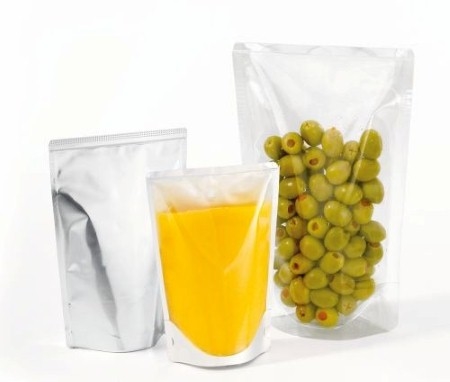 ints reduce the leaker rate and make the industry take notice. Moreover, narrow seams and less rework save packaging material while cold tools are gentle on sensitive feed material. A closer look at an alternative for heat sealing.
ints reduce the leaker rate and make the industry take notice. Moreover, narrow seams and less rework save packaging material while cold tools are gentle on sensitive feed material. A closer look at an alternative for heat sealing. While 90 – 95 % of all sealing is still done with heat, an alternative technology has emerged: ultrasonic sealing. Ultrasonic vibrations melt the packaging material from the inside out (versus from the outside in as in heat sealing) and bond the material on a molecular level. A variety of applications is possible: cross and longitudinal seams for bags, blisters, coated cartons as well as sealing the film on coffee capsules and containers. In the market for almost 25 years ultrasonic sealing has established itself as an alternative when filling heat sensitive, chunky and powdery substances with the following benefits:
• Short cycle times between 80 and 200 ms
• Tight sealing of product-contaminated surfaces (liquid, powder, paste)
• Saving of packaging material due to narrow seams and tighter seams (less rework)
• No thermal influences on feed material and packaging material
• Quality assurance by means of detailed parameterization
• Good hot tack
• Reduced effort for cleaning of sealing tools
• Good overall equipment effectiveness (OEE)
Ultrasonic seals are slimmer than heat contact seals and thus save material, but they equally tight and strong. Precise focusing of energy to melt the material is ensured by means of the small contact surface between sealing tool (called sonotrode) and anvil. Anvils mostly have a textured structure.
Tight sealing through product-contaminated surfaces
Tight and strong sealing joints are also achieved for product-wetted sealing layers, since the mechanical ultrasonic vibrations literally "knock off" (displace) any feed material residues from the sealing area. This significantly reduces the number of leaking packages. Due to the option of parameter adjustment to the sealing process, variations in layer thickness, humidity content, and temperature difference can be detected and compensated within the specified limits. The ultrasonic generator saves all data and allows for quality assessment of the sealing process by means of reference/actual comparison. Consequently, process check complies with high quality requirements. Since operation is performed with cold tools, packaging and feed material are hardly subjected to thermal loads. The cleaning effort is reduced and sealing tools are not soiled even in case of malfunctions in the filling process, which is a great advantage, particularly for temperature-sensitive feed materials with low melting points, such as chocolate-containing or chocolate-coated products. The use of nonstick coating, such as Teflon strips, is not required.
Short cycle times
Ultrasonic sealing is characterized by high energy efficiency, since energy is only required during actual sound exposure and short cycle times can be realized with sealing times of between 80 and 200 milliseconds. This is particularly beneficial with thick packaging materials or connections between injection molded packaging materials/accessories and foils. In comparison with permanently heated heat contact processes, ultrasonic systems are ready for operation immediately upon switch-on of the ultrasonic generator. By storing the sealing parameters in the memory of the ultrasonic generator, automatic switch-over among parameter sets is possible. Changes become immediately effective upon start of the next sealing process, so that no machine downtime is required. Intelligent adjustment of sealing parameters to ambience-based or process-related changes allows for consistent and uniform sealing quality.
Increased hot tack
With the ultrasonic process, the heat required for melting is only generated inside the seal (sealing layer) within the joining area. The support layer remains nearly completely cold and upon termination of energy input, the heat dissipates faster to the outside due to the temperature difference between the support layer and the sealing layer so that the hot-tack resistance is significantly higher. Hot tack characterizes the strength of the joint immediately after termination of the thermal joining process without cooling. For vertical form, fill and seal (VFFS) machines in particular, high values are important since the seal joints are subjected to heavy loads through filling immediately after sealing.
Operators will sometimes shy away from new technology stating that ultrasonic sealing is too complicated. Additional trainings are in order, but once parameters are correctly set, the process is robust. Ultrasonic tools can be built into new machines, but retrofit is possible and has been successfully done. A US salad packer has recently refitted over 50 platforms. The result is more output and tighter seals. The same applies for a huge pet food manufacturer who reduced significantly the number of leaking packages using ultrasonic tool for sealing pouches. Herrmann Ultraschall has established retro-fit guidelines for almost all existing packaging machines. Lastly, the investment for ultrasonic tools is 20 – 50% higher, meaning packers will have to look at the total cost of ownership. In certain applications ultrasonic sealing tools have proven to have a return on invest within 6-18 months due to higher output, packaging material saved and less cost for QS personnel. In the past the market for ultrasonic applications has been driven by the packaging companies, but slowly packaging machine manufacturers and film producers are becoming aware of the new market potential. Dow Europe is one of the first resin producers to initiate the development of an optimized film for ultrasonic sealing. This project together with Amcor, Bosch and Herrmann Ultraschall was presented at the recent Interpack in Düsseldorf.







